Original Author: Francesco
Original Compilation: Luffy, Foresight News
The next Ethereum upgrade, Pectra, has taken its first step.
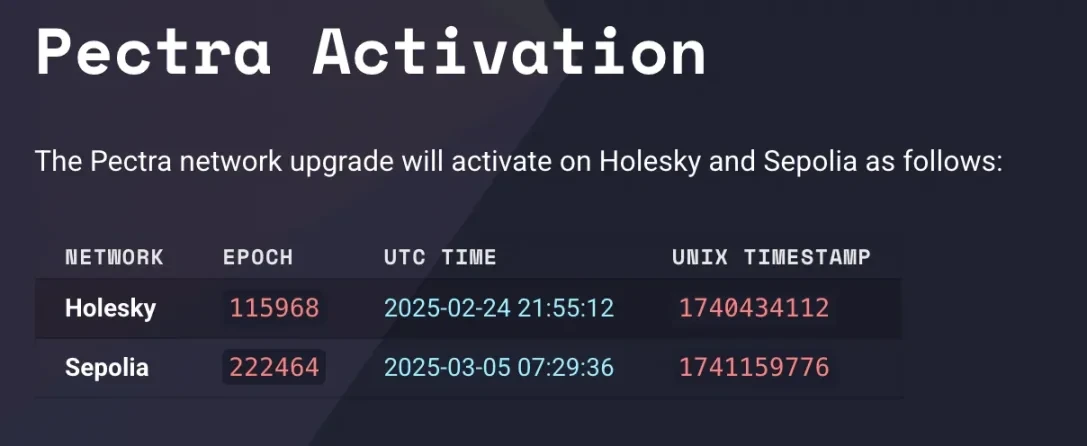
On February 24, the Pectra upgrade went live on the Holesky testnet; on March 5, Pectra will go live on the Sepolia testnet.
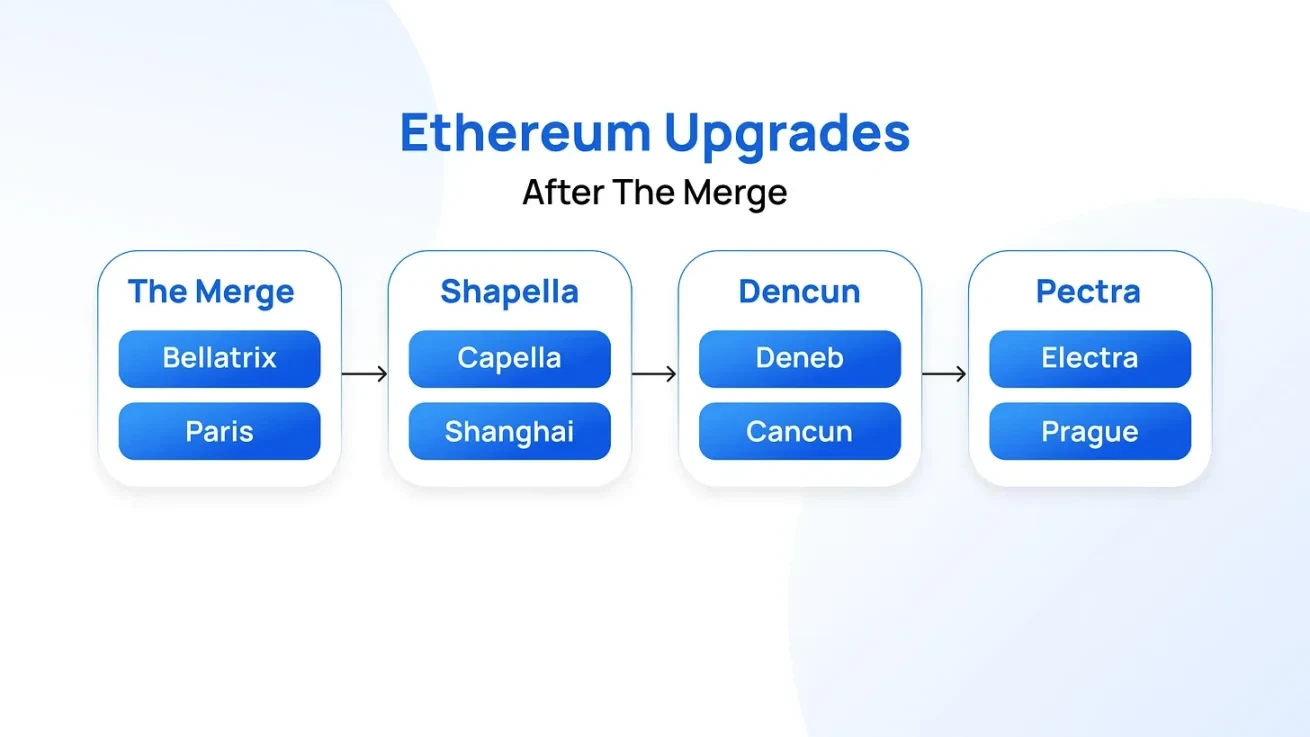
Once these upgrades are successfully implemented on the testnet, the mainnet upgrade date will be determined, expected to occur within 3 to 9 months after the testnet implementation.
Pectra is a significant upgrade that introduces multiple Ethereum Improvement Proposals (EIPs) at once:
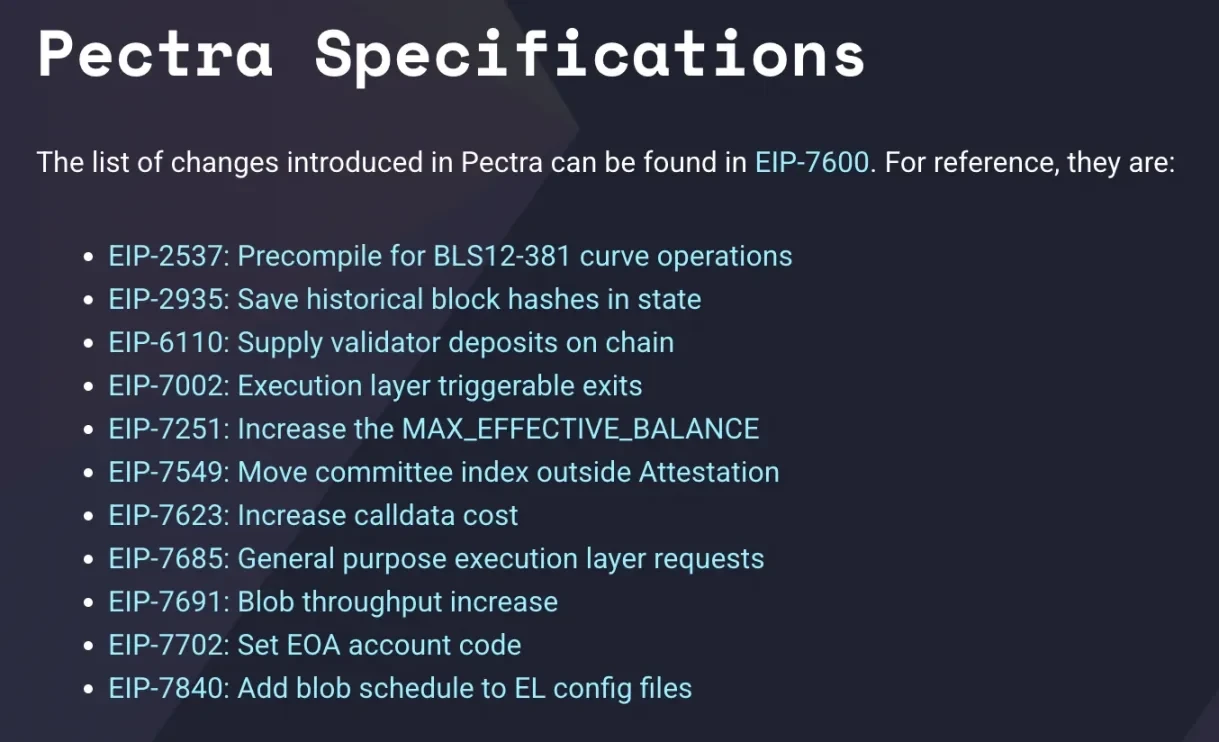
We can categorize these upgrades into three key areas:
Improving Ethereum accounts
Enhancing the user experience for Ethereum validators
Expanding the processing capacity of "data Blobs"
Let’s take a closer look at some of the Ethereum Improvement Proposals being introduced and how they will benefit the Ethereum protocol and its users.
Improving Ethereum Accounts: EIP-7702
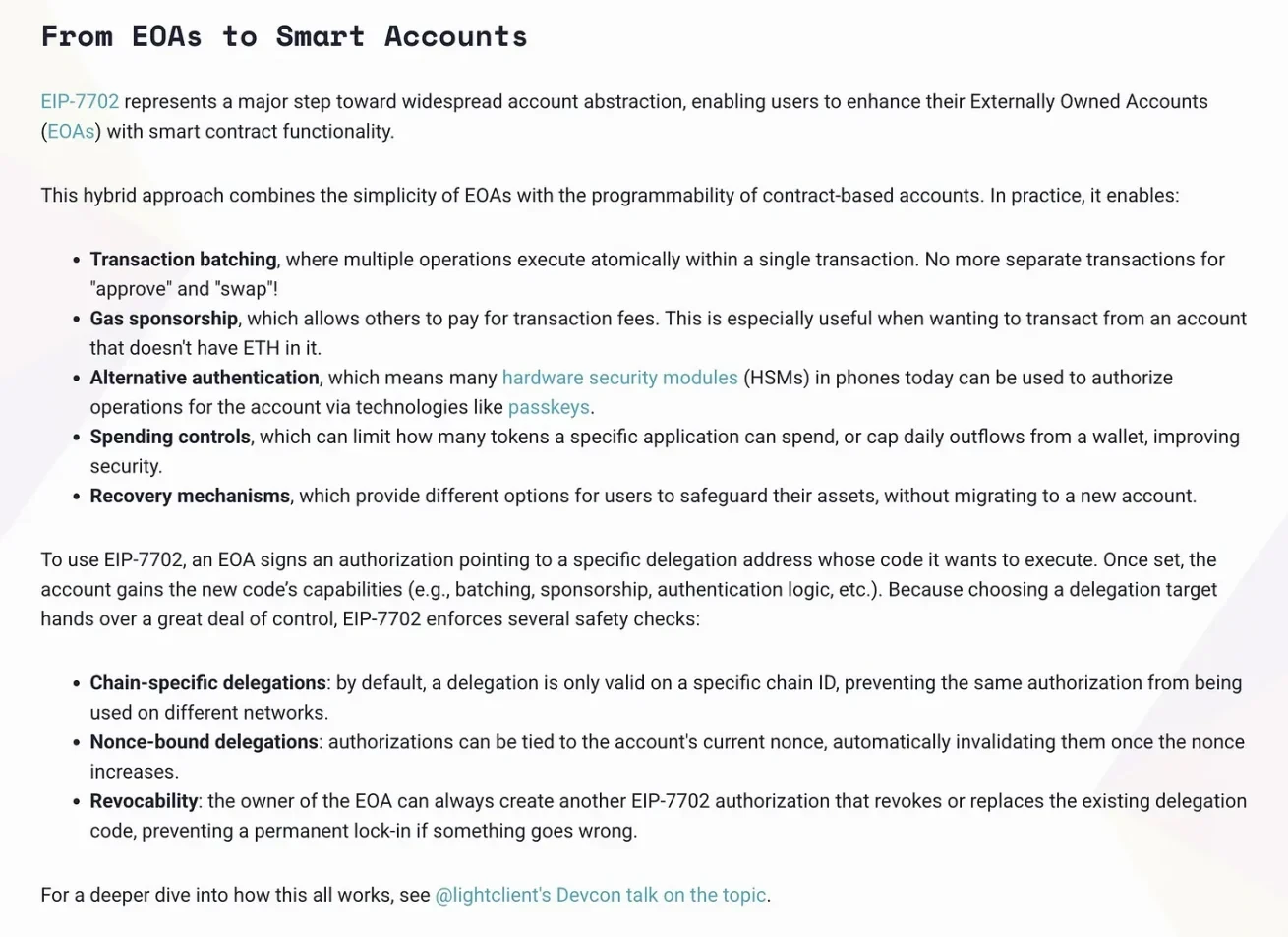 EIP-7702 brings Ethereum closer to an account abstraction experience at the protocol level. It achieves this by extending smart contract functionality to Ethereum's externally owned accounts (EOAs), including:
EIP-7702 brings Ethereum closer to an account abstraction experience at the protocol level. It achieves this by extending smart contract functionality to Ethereum's externally owned accounts (EOAs), including:
Transaction batching: executing multiple operations in a single transaction
Gas fee sponsorship: allowing accounts without ETH to have their gas fees sponsored by others
More authentication and recovery mechanisms
Enhancing the User Experience for Ethereum Validators: EIP-7251, EIP-7002, EIP-6110
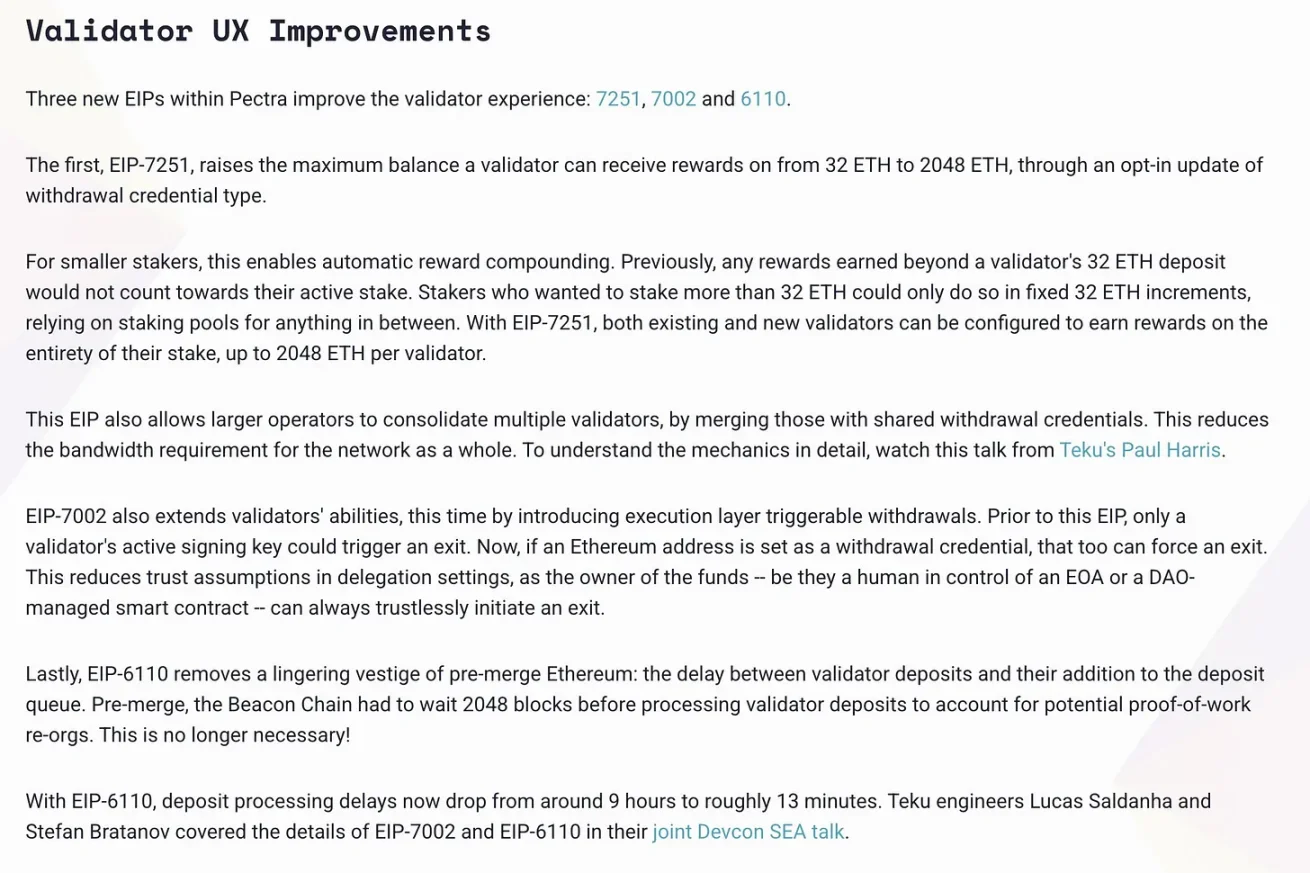
EIP-7251: Increases the maximum balance for validators to 2048 ETH and allows for automatic compounding of larger effective staking rewards. Previously, rewards were calculated based only on a balance of 32 ETH. Additionally, larger validators can now merge multiple 32 ETH validators into one.
EIP-7002: Allows triggering withdrawal operations by setting the execution layer address as "withdrawable credential," reducing reliance on trust. Previously, only validators could trigger exit operations.
EIP-6110: Eliminates the delay of up to 2048 blocks from the time of validator deposit to being added to the queue. The expected wait time will be reduced from 9 hours to 13 minutes.
Expanding the Processing Capacity of "Data Blobs": EIP-7691
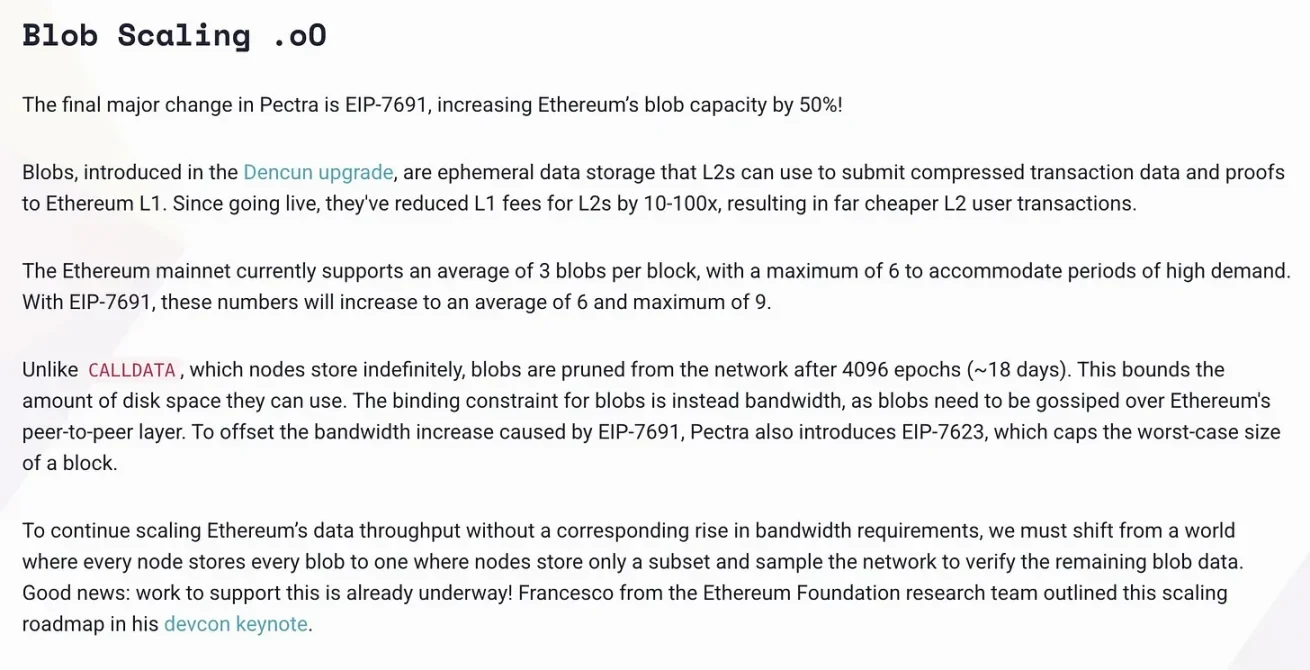
As the cost of "Blobs" increases, the demand to expand their processing capacity has emerged. Through EIP-7691, the capacity of "data Blobs" will increase by 50%: currently, each Ethereum block can accommodate an average of about 3 "data Blobs" (up to 6 during peak demand). With EIP-7691, the average number of "data Blobs" that can be accommodated per block will increase to 6, and during peak demand, it will increase to 9.
The next step in further expanding the processing capacity of "data Blobs" is to reduce the need to store all "data Blobs" and migrate to a subnet that can still be used to validate "data Blob" data.
Other EIPs Included in the Pectra Upgrade
EIP-2537: Increases the security bit count of operations from the current 80+ bits to 120+ bits.
EIP-2935: To prepare for the arrival of stateless clients, this proposal suggests storing historical block hashes as part of the block processing logic in the state. By implementing this through contract storage, EIP-2935 allows for a soft transition without affecting block hash logic. Layer 2 networks will be able to leverage longer historical data and directly query stored contracts.
EIP-7549: This proposal aims to improve the efficiency of the Casper client. It achieves this by reducing the number of pairings required for consensus verification. Specifically, it removes one of the three elements in the Casper client proof message: the committee index. By removing this element from the proof message, consensus votes can now be aggregated more efficiently into blocks, increasing the number of votes in a block from 2 periods to 8 periods.
EIP-7623: The proposal to increase the cost of call data is one of the most impactful upgrades (especially for layer 2 networks). This proposal aims to adjust the cost of call data to address the gap between the average block size (100kb) and the maximum block size (7.15MB). This will not affect ordinary users and only involves transactions primarily used for publishing data. The cost increase will be implemented through a base fee that depends on the proportion of gas fees spent on call data operations: it can be achieved by reducing block size to accommodate more "data Blobs" or increasing gas limits.
EIP-7685: Introduces a framework for storing requests triggered by smart contracts. This allows validators controlled by smart contracts to delegate management operations to smart contracts, reducing the need for intermediaries.
EIP-7840: Introduces a method to "dynamically adjust the target and maximum number of 'data Blobs' per block" through a "blobSchedule" object, rather than passing all values through an API.
This upgrade sends a clear signal from Ethereum. We know that these upgrades have been on the agenda for a long time and are not a response to recent criticisms. Nevertheless, this upgrade focuses on making the Ethereum network more secure, improving Ethereum accounts, and expanding the processing capacity of "data Blobs," which aligns with some of the most important development needs.
免责声明:本文章仅代表作者个人观点,不代表本平台的立场和观点。本文章仅供信息分享,不构成对任何人的任何投资建议。用户与作者之间的任何争议,与本平台无关。如网页中刊载的文章或图片涉及侵权,请提供相关的权利证明和身份证明发送邮件到support@aicoin.com,本平台相关工作人员将会进行核查。



